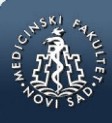md-medicaldata
Main menu:
- Naslovna/Home
- Arhiva/Archive
- Godina 2024, Broj 1
- Godina 2023, Broj 3
- Godina 2023, Broj 1-2
- Godina 2022, Broj 3
- Godina 2022, Broj 1-2
- Godina 2021, Broj 3-4
- Godina 2021, Broj 2
- Godina 2021, Broj 1
- Godina 2020, Broj 4
- Godina 2020, Broj 3
- Godina 2020, Broj 2
- Godina 2020, Broj 1
- Godina 2019, Broj 3
- Godina 2019, Broj 2
- Godina 2019, Broj 1
- Godina 2018, Broj 4
- Godina 2018, Broj 3
- Godina 2018, Broj 2
- Godina 2018, Broj 1
- Godina 2017, Broj 4
- Godina 2017, Broj 3
- Godina 2017, Broj 2
- Godina 2017, Broj 1
- Godina 2016, Broj 4
- Godina 2016, Broj 3
- Godina 2016, Broj 2
- Godina 2016, Broj 1
- Godina 2015, Broj 4
- Godina 2015, Broj 3
- Godina 2015, Broj 2
- Godina 2015, Broj 1
- Godina 2014, Broj 4
- Godina 2014, Broj 3
- Godina 2014, Broj 2
- Godina 2014, Broj 1
- Godina 2013, Broj 4
- Godina 2013, Broj 3
- Godina 2013, Broj 2
- Godina 2013, Broj 1
- Godina 2012, Broj 4
- Godina 2012, Broj 3
- Godina 2012, Broj 2
- Godina 2012, Broj 1
- Godina 2011, Broj 4
- Godina 2011, Broj 3
- Godina 2011, Broj 2
- Godina 2011, Broj 1
- Godina 2010, Broj 4
- Godina 2010, Broj 3
- Godina 2010, Broj 2
- Godina 2010, Broj 1
- Godina 2009, Broj 4
- Godina 2009, Broj 3
- Godina 2009, Broj 2
- Godina 2009, Broj 1
- Supplement
- Galerija/Gallery
- Dešavanja/Events
- Uputstva/Instructions
- Redakcija/Redaction
- Izdavač/Publisher
- Pretplata /Subscriptions
- Saradnja/Cooperation
- Vesti/News
- Kontakt/Contact
 Pasterovo društvo
Pasterovo društvo
- Disclosure of Potential Conflicts of Interest
- WorldMedical Association Declaration of Helsinki Ethical Principles for Medical Research Involving Human Subjects
- Committee on publication Ethics
CIP - Каталогизација у публикацији
Народна библиотека Србије, Београд
61
MD : Medical Data : medicinska revija = medical review / glavni i odgovorni urednik Dušan Lalošević. - Vol. 1, no. 1 (2009)- . - Zemun : Udruženje za kulturu povezivanja Most Art Jugoslavija ; Novi Sad : Pasterovo društvo, 2009- (Beograd : Scripta Internacional). - 30 cm
Dostupno i na: http://www.md-medicaldata.com. - Tri puta godišnje.
ISSN 1821-1585 = MD. Medical Data
COBISS.SR-ID 158558988
SPITZ NEVUS - Prikaz slučaja
SPITZ NEVUS - Case report
Authors
Anđelija Živković Stanojević1, Darko Simonović1, Jordan Radojičić2
1 Dom zdravlja Bela Palanka
2 Vojna Bolnica Niš
• The paper was received on 26.11.2015. / Accepted on 30.11.2015.
Abstract
Nevus are benign lesions of skin made of nevus cells. Significance of Spitz nevus (and its variations) is emphasized because they could show great clinical and also histological similarity to malignant melanoma. In following presentation female patient 37-year-old reports changes of skin on the interior side of the right upper arm in the form of nevus which is present from childhood and itching in its surroundings. One year backwards lesions form, edges and colorations become irregular. After clinical examination, change of skin on the interior side of the right upper arm, dimensions 5x4 mm, irregular form, inhomogeneous without changes in surroundings is observed. Patient gets order for dermatologist regarding to risk factors from anamnesis and clinical examination. After dermoscopy and overview of Spitz nevus, treatment is completed with excision of nevus and final pathohystological diagnosis of composite naevocellular nevus. Because of high frequency of pigment lesions in population, recognition, supervision and if necessary treatment is needed. For family doctor it is important to recognize risk factors for occurrence of this lesions, clinical signs for suspiciousness of lesions that require further dermatological examinations. Foundation of dermatological supervision is dermoscopy as non-invasive, in vivo method for skin changes examination and their eventual differentiation.
Conclusion: All suspicious pigment lesions of skin should always be examined dermoscopicaly, especially for patients with verified risk factors. Continuous prevention in developing healthy life habits and education of patients for self-examination is necessary.
References
- Paravina M, Spalević Lj, Stanojević M, Tiodorović J, Binić I, Jovanović D. Dermatovenerologija. Prosveta, Niš, 2003; 292-98, 310-17.
- Atanacković M, Bacetić D, Basta-Jovanović G, Begić - Janeva A, Boričić I, Brašanac D i dr: Patologija, Medicinski fakultet Univerziteta u Beogradu, Katedra za patologiju, Beograd 2009; 710-19.
- Busam KJ, Kutzner H, Cerroni L, Wiesner T. Clinical and pathologic findings of Spitz nevi and atypical Spitz tumors with ALK fusions. Am J Surgical Path 2014; 38(7): 925–33.
- Weedon D: Weedon's Skin Pathology, 3rd Ed., Churchill Livingstone Elsevier, 2010, 721-27.
- Miteva M., Lazova R: Spitz nevus and atypical Spitzoid neoplasm, Semin. Cutan Med Surg; 2010;29(3):165-73.
- Ferrara G, Gianotti R, Cavicchinis S, Salviato T, Zalaudek I, Argenziano G: Spitz nevus, Spitz tumor and spitzoid melanoma a comprehensive clinicopathologic overview, Dermatol clin, 2013;31(4):589-98.
- Busam J. Klaus: Dermatopathology Foundations in diagnostic pathology. Saunders Elsevier 2010; pp. 448-55
- Rapini RP. Spitz nevus or melanoma? Semin Cutan Med Surg , 1999,18(1):56-63.
- Tiodorović-Živković D: Povezanost strukturnog obrasca, distribucije pigmenta i boje melanocitnih nevusa određenih metodom dermoskopije sa tipom kože i uzrastom: Doktorska disertacija, Univerzitet u Nišu, Medicinski fakultet 2013; 9, 14-18, 83, 126.
- Fredberg I.M, Elsen A.Z, Wolff K, Austen K.F, Goldsmith L.A, Katz S.I: Fitzpatrick's Dermatology in General Medicine, (Two Vol. Set), 6th Ed., 2003; 1014-20, 1038-39
- Krstić N, Čanović P, Ravić - Nikolić A, Miličić V: Uloga dermoskopije u dijagnostici malignog melanoma, MED. ČAS. ISSN 0350. 1221. UDK. 61, 2010
- Tsao H, Olazagasti, Cordoro, Brewer, Taylor, Bordeaux et al: Early detection of melanoma: reviewing the ABCDEs, American Academy of Dermatology Ad Hoc Task Force For the ABCDEs of Melanoma; Journal of the American Academy of Dermatology 2015, 72, (4), 717-723.
PDF Živković Stanojević A. et al. • MD-Medical Data 2015;7(4): 323-326
 Medicinski fakultet
Medicinski fakultet